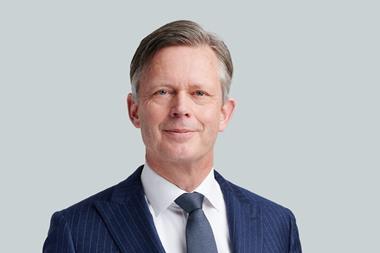The Dutch financial sector, government and supervisors have welcomed new guidelines for measuring the impact of investment in the 17 sustainable development goals (SDGs) set out by the United Nations.
The guidelines – drawn up through a joint effort of the financial sector – have been endorsed by the Platform for Sustainable Financing, established by regulator De Nederlandsche Bank last year.
The sector organisations represented in the forum – including the Pensions Federation, the Association of Insurers (VvV) and the Dutch Fund and Asset Management Association – are now to discuss the recommendations with their members.
A significant amount of funding is needed in order to achieve the SDGs by 2030, but currently it is difficult to establish the exact impact of investments. The guidelines provide a limited number of indicators for measuring impacts. Investments are expected to be scaled up ultimately from millions to billions of euros.
The platform’s working group that produced the suggestions will flesh out the guidelines.
APG and PGGM have already plotted investment routes to the UN’s sustainable development goals. Last year, the two asset managers – which cater for the €389bn civil service scheme ABP and the €187bn healthcare pension fund PFZW, respectively – as well as asset managers MN and Kempen Capital Management, announced that they wanted to contribute to the UN’s SDGs.
PFZW said it wanted to have invested €20bn in projects linked to the SDGs by 2020, while ABP said its aim was to have a €58bn stake in this category of investment by then.
Pension assets now 181% of GDP
Finance minister Jeroen Dijsselbloem said that combined assets of Dutch pension funds had risen from 90% to 181% of the Netherlands’ GDP between 1997 and 2016.
In the same period, liabilities increased from 77% to 178%, he said. Dijsselbloem was answering MPs’ questions about the country’s annual budget.
Dijsselbloem added that, during the past 20 years, total liabilities had exceeded assets four times, in 2002, 2003, 2008 and 2011.
The difference was largest between 2007 and 2008, when a €200.6bn (40.8%) funding surplus transformed into a €38.6bn (6%) funding gap, the minister said.
His overview also showed that the discount rate for liabilities – based on interest rates with a 20-year duration – had dropped from 5% at the end of 2007 to 1.2% at 2016-end.
The minister reiterated his view that raising interest rates was a bad idea.
Next week the Dutch parliament is to debate a bill to increase the discount rate as long as the European Central Bank continues its policy of monetary easing. The bill was tabled by Martin van Rooijen, MP for the party for the elderly, 50Plus.
Deutsche Bank scheme considers future
The board of the €390m Dutch pension fund of Deutsche Bank has said it plans to consult its 800 active participants, as well as its sponsor, works council (OR) and accountability body (VO), about the future of the scheme.
The company pension fund is facing a decreasing number of participants and increasingly stringent and expensive regulation. Last year, its costs for pensions provision had risen to €660 per participant.
Although the board said the scheme’s current situation was not worrying, it underlined the importance of an early assessment of its future for the mid-term, also taking the expected reform of the pension system into account.
At August-end, funding of the pension fund stood at 118.2%. The Deutsche Bank scheme is a collective defined contribution arrangement.
TenCate to transfer to sector scheme
The €415m company scheme TenCate is to transfer its pensions to sector scheme Mitt at the end of the year.
The scheme said the employer would made an additional contribution of €10m to ease the transition to Mitt, the €2.7bn industry-wide pension fund for the fashion, interior design, carpet and textile industries, where its 800 active participants will accrue new pension rights.
Last year, TenCate’s board concluded that continuing independently was not an option for the longer term, following the textile firm’s plans to increase the independence of its businesses.
As a consequence, the pension fund would have had to deal with more employers, each of which could decide to place their pension arrangements elsewhere.
The board also cited rising costs for implementing different pension plans combined with a dropping number of participants and increasing difficulties finding new board members.
At August-end, funding of Mitt and TenCate stood at 99.5% and 98.9% respectively, a difference that could be bridged by the sponsor’s additional contribution.
Mitt’s cost of pensions administration of €96 per participant was less than one-third that of the TenCate scheme. Asset management costs at both pension funds were roughly the same.









No comments yet